| FS Class 470 | |||||||||||||||||||||||||||||||||||||||||
|---|---|---|---|---|---|---|---|---|---|---|---|---|---|---|---|---|---|---|---|---|---|---|---|---|---|---|---|---|---|---|---|---|---|---|---|---|---|---|---|---|---|
 FS locomotive 470.092 as preserved | |||||||||||||||||||||||||||||||||||||||||
| |||||||||||||||||||||||||||||||||||||||||
| |||||||||||||||||||||||||||||||||||||||||
| |||||||||||||||||||||||||||||||||||||||||
The Ferrovie dello Stato Italiane (FS; Italian State Railways) Class 470 (Italian: Gruppo 470) is a 0-10-0 steam locomotive.
| FS Class 470 | |||||||||||||||||||||||||||||||||||||||||
|---|---|---|---|---|---|---|---|---|---|---|---|---|---|---|---|---|---|---|---|---|---|---|---|---|---|---|---|---|---|---|---|---|---|---|---|---|---|---|---|---|---|
 FS locomotive 470.092 as preserved | |||||||||||||||||||||||||||||||||||||||||
| |||||||||||||||||||||||||||||||||||||||||
| |||||||||||||||||||||||||||||||||||||||||
| |||||||||||||||||||||||||||||||||||||||||
The Ferrovie dello Stato Italiane (FS; Italian State Railways) Class 470 (Italian: Gruppo 470) is a 0-10-0 steam locomotive.
The Class 470 locomotive was one of twelve standard designs developed by the FS right after their institution, and was intended for heavy mountain work. The two extreme axles were given a lateral play of 40 millimetres (1.6 in) and the central wheels were without flanges, to allow the locomotive to deal even with sharp curves. The boiler was common with that of the FS Class 680, as was the four-cylinder compound Plancher engine, in which the two high pressure (HP) and the two low pressure (LP) cylinders were respectively grouped together, with each pair being served by a single piston valve via a crossed port arrangement. [1] [2]
The Class 470 was unusual in its appearance because the coal reserves were carried on board it, on the left side of the fully enclosed cab, while the water was carried by a separate tender; this has led some to define them as "semi-tank locomotives". [3] [2]
The Class 470 was built between 1907 and 1911 by Maffei (64 locomotives, 1907–09), Officine Meccaniche (52, 1908–11), Ernesto Breda (10, 1909) and Officine Meccaniche e Navali di Napoli (17, 1909–12), for a total of 143 locomotives. [1] [4]
P. M. Kalla-Bishop suggested that the Midland Railway 0-10-0 "Lickey Banker", which shared with the Class 470 the wheelbase and the crossed port arrangement, may have been inspired by it, as a complete sets of drawings of the Italian locomotive were stored at Derby. [2]
From 1918 until the 1930s, all but 14 of the Class 470 were rebuilt with a superheater and reclassified as the Class 471 (while keeping their old running numbers, e.g. the 470.018 became 471.018). From 1924 some of the rebuilt locomotives (24 in total) were also given enlarged HP cylinders of 400 mm (16 in) diameter, and were initially reclassified as Class 472; from 1930, however, these were renumbered in the Class 471 as the subclass 471.2XX. In total, 105 Class 471 and 24 Class 472 locomotives were rebuilt. [5] [6]
109 of the rebuilt 471 and 472 locomotives were also altered from their original semi-tank condition to orthodox tender locomotives, being fitted tenders of the extinct FS Class 290, with a capacity of 6,000 kg (13,000 lb) of coal and 15,000 L (4,000 US gal) of water; later, tenders previously allocated to the FS Class 730, with a capacity of 20,000 L (5,300 US gal) of water, were also fitted to some locomotives. [7] [4]
Nicknamed "crematorium" by their crews (because of the fully enclosed cab, which made the work environment very hot and uncomfortable for the crews), the Class 470 and 471 locomotives served on steep mountain railways throughout Italy for all of their career, with some being assigned to passenger and freight work on important railways such as the Turin-Genoa railway, the Porrettana railway, the Turin-Modane railway and others.
However, the Class 470 had the dubious honour of being the first Italian steam locomotive to be displaced from a main line by electrification, as in 1907 work on the Giovi section of the Turin-Genoa railway began, with the first tests running in June 1910; on the 3.5% (1 in 28½) steep incline, compared with the Class E.550, the Class 470 was completely outperformed by the smaller and lighter electric locomotive, only managing to pull 170 t at 25 km/h (16 mph), while the latter managed to pull 190 t at 50 km/h (31 mph), while eliminating issues such as most physical effort and smoke in tunnels. This meant that major summit lines would be among the first targets for further electrifications, and the Class 470 were gradually relegated to secondary lines. [8]
The few unrebuilt Class 470 survived until the early 1960s. The last Class 471 locomotives were withdrawn in the early 1970s from service on the Sulmona-Terni railway. [9] [6]
One Class 470 locomotive survived into preservation, the 470.092, currently preserved as a static exhibit in the Museo Nazionale della Scienza e della Tecnologia "Leonardo da Vinci" of Milan.

The Ferrovie dello Stato Class 740 is a class of 2-8-0 'Consolidation' steam locomotives.

The Ferrovie dello Stato Class 685 is a class of 2-6-2 'Prairie' express train steam locomotives. These are colloquially known as Regine, mirroring their fame as one of the most successful and appreciated Italian steam locomotives.

The Ferrovie dello Stato Italiane Class 691 is a class of 4-6-2 'Pacific' locomotives; they were the fastest and most powerful locomotives ever built for the Italian railways.
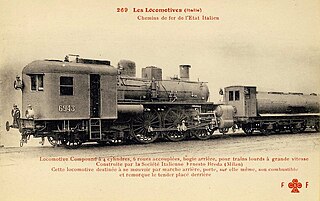
The Rete Adriatica Class 500, classified after 1905 in the Ferrovie dello Stato Italiane as Class 670 was an unorthodox and iconic cab forward 4-6-0 (2'C) steam locomotive.

The Ferrovie dello Stato Italiane Class 690 was a 4-6-2 'Pacific' steam locomotive for express trains.

The Ferrovie dello Stato Italiane Class 746 is a class of 2-8-2 'Mikado' steam locomotive. These were the biggest locomotives ever built by the Ferrovie dello Stato, even though not the fastest, which were the Class 691s.
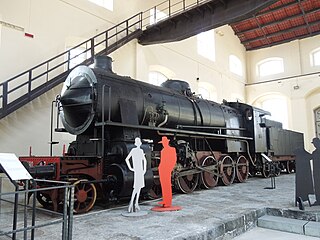
The Ferrovie dello Stato Class 480 is a 2-10-0 steam locomotive.
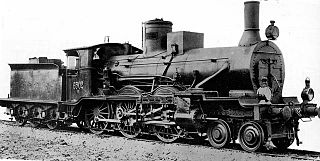
The Ferrovie dello Stato Italiane Class 650, formerly SFAI1181-1200 and Rete Mediterranea 300 Class, also known as "Vittorio Emanuele II", was the first steam locomotive in continental Europe to have the 4-6-0 'Ten-Wheeler' arrangement.

The Ferrovie dello Stato Italiane Class 940 is a 2-8-2 steam tank locomotive, derived from the Class 740 tender locomotive.

The Ferrovie dello Stato Italiane Class 680 is a 2-6-2 express steam locomotive; it was the direct ancestor of the very successful and appreciated Class 685.

The Ferrovie dello Stato Italiane Class 552, formerly Rete Adriatica Class 180 bis, is a 4-4-0 steam locomotive; it was the final development in Italy of the 'American' express locomotive type.

The Ferrovie dello Stato Italiane Class 600, formerly Rete Adriatica Class 380 and Società per le Strade Ferrate Meridionali Class 380, is a 2-6-0 'Mogul' steam locomotive; it is considered by some as the first Italian modern steam locomotive.

The Ferrovie dello Stato Italiane Class 835 is a 0-6-0T steam locomotive; it was the standard steam shunter of the FS.

The Ferrovie dello Stato Italiane Class 290, formerly the Rete Adriatica Class 350 bis, is a 0-6-0 steam locomotive.

The Ferrovie dello Stato Italiane Class 420, formerly SFAI Class 1200, Rete Adriatica Class 420 and Rete Mediterranea Class 480, was a 0-8-0 steam locomotive.

The Ferrovie dello Stato Class 741 is a class of 2-8-0 'Consolidation' steam locomotives, rebuilds from the FS Class 740 with a Franco-Crosti boiler; it was the last class of steam locomotives introduced in Italy.
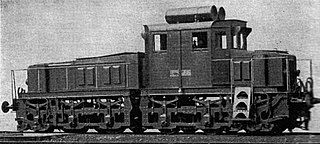
The FS Class E.620 was a class of third-rail electric locomotives built by Officine Meccaniche Reggiane for the Italian State Railways (FS). They were built in 1925 using motors and electrical equipment from Class E.10 railcars which had been withdrawn in 1923. After World War II they were converted to 3,000 volt DC operation and became FS Class E.621.
The FS Class E.621 was a class of five electric locomotives of the Italian State Railways (FS). They were rebuilt in 1947 from FS Class E.620, which was originally built in 1925. The main change was conversion from 650 V DC third rail to 3,000 V DC overhead line power supply.
The Ferrovie dello Stato Class 745 was a class of 2-8-0 'Consolidation' steam locomotives.
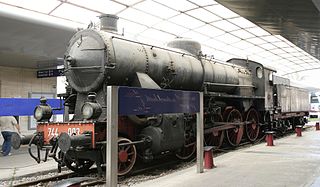
The Ferrovie dello Stato Class 744 is a class of 2-8-0 steam locomotives; they were the last orthodox steam locomotives built for the FS.